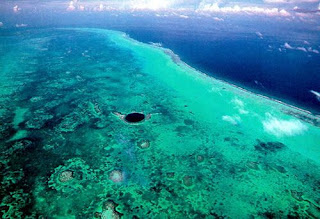
As the US government ponders a strategy to deal with threatening asteroids, a dramatic explosion over Indonesia has underscored how blind we still are Movie Camera to hurtling space rocks.
On 8 October 2009 an asteroid detonated high in the atmosphere above South Sulawesi, Indonesia, releasing about as much energy as 50,000 tons of TNT, according to a NASA estimate released on Friday. That's about three times more powerful than the atomic bomb that levelled Hiroshima, making it one of the largest asteroid explosions ever observed. However, the blast caused no damage on the ground because of the high altitude, 15 to 20 kilometres above Earth's surface, says astronomer Peter Brown of the University of Western Ontario (UWO), Canada. Brown and Elizabeth Silber, also of UWO, estimated the explosion energy from infrasound waves that rippled halfway around the world and were recorded by an international network of instruments that listens for nuclear explosions.The explosion was heard by witnesses in Indonesia. Video images of the sky following the event show a dust trail characteristic of an exploding asteroid.
Sudden Impact
 The amount of energy released suggests the object was about 10 metres across, the researchers say. Such objects are thought to hit Earth about once per decade. No telescope spotted the asteroid ahead of its impact. That is not surprising, given that only a tiny fraction of asteroids smaller than 100 metres across have been catalogued, says Tim Spahr, director of the Minor Planet Center in Cambridge, Massachusetts. Yet objects as small as 20 or 30 metres across may be capable of doing damage on the ground, he says.
The amount of energy released suggests the object was about 10 metres across, the researchers say. Such objects are thought to hit Earth about once per decade. No telescope spotted the asteroid ahead of its impact. That is not surprising, given that only a tiny fraction of asteroids smaller than 100 metres across have been catalogued, says Tim Spahr, director of the Minor Planet Center in Cambridge, Massachusetts. Yet objects as small as 20 or 30 metres across may be capable of doing damage on the ground, he says."If you want to find the smallest objects you have to build more, larger telescopes," says Spahr. "A survey that finds all of the 20-metre objects will cost probably multiple billions of dollars." The US Office of Science and Technology Policy, which advises the White House, must develop a policy to address the asteroid hazard by October 2010 under a deadline imposed by 2008 legislation. It is likely to be influenced by a report from the National Research Council on the asteroid problem, which is expected by year's end.
By David Shiga





































